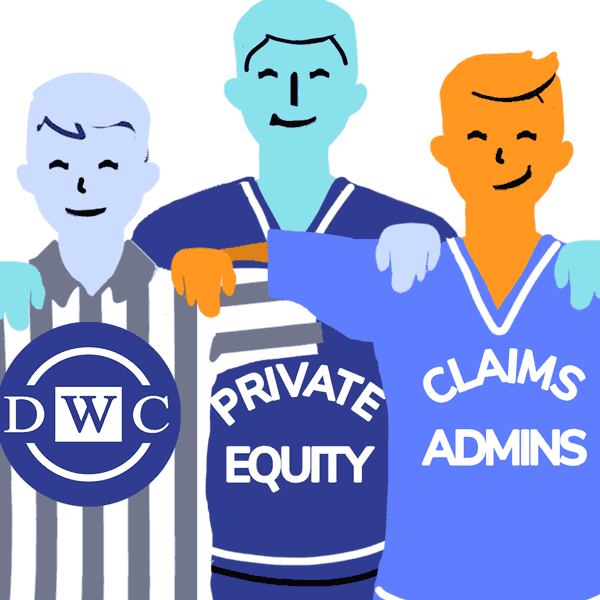daisyData Show e-Billing WORKS

Regular readers know that with painfully inadequate regulatory oversight in California, daisyNews has assumed the duty of highlighting the systemic issues that impede electronic billing and payment in workers’ compensation.
If providers cannot get paid for treating California’s injured workers, they will stop treating these patients. But it’s not all bad news—today, we focus on 2024 e-billing data, showing how beautifully e-billing works (when done correctly).
daisyData shows that despite challenges, hiccups, and setbacks, e-billing drastically speeds up and streamlines billing and payment for the treatment of injured workers. Most importantly, it saves precious time and resources for provider staff, who are spared the excessive work required to mail bills to hundreds of different claims administrators.
Of the nearly 800,000 bills California daisyBill providers sent from January through May this year, over 96% were sent electronically as e-bills—not faxed, emailed, or snail-mailed.
For all California workers’ comp bills daisyBill sent, providers received an Explanation of Review (EOR) in 8.9 days on average.
Do some claims administrators ignore e-billing requirements and abuse providers? Certainly. Does an unbelievably impotent state agency fail spectacularly to govern it all? Absolutely. However, the numbers demonstrate that e-billing technology is working, making treating injured workers more administratively and financially sustainable for providers.
See the detailed data below.
96% e-Bill Delivery
Building technology that consistently successfully transmits millions of clean, compliant workers' comp e-bills annually wasn’t simple. But as a result, providers’ administrative staffs save enormous time and avoid incalculable hassles typically associated with workers’ comp billing.
From January 1 to May 31, 2024, California daisyBill clients sent 799,061 workers’ comp bills to 265 claims administrators. Of those, daisyBill sent 767,772, or 96.1% electronically as e-bills.
Where claims administrator errors or non-compliance prevented successful e-bill delivery, daisyBill’s automated technology securely delivered these bills via fax, email, or (exceedingly rarely) regular mail. The table below shows that daisyBill emailed 1.6% and faxed 2.2% of all bills. daisyBill “dropped” to paper form and mailed only 676, or one-tenth of one percent of, our clients’ bills.
Bill Delivery Method |
CA Bill Count |
Bill Delivery Method % |
e-Bill |
767,772 |
96.1% |
Fax |
17,698 |
2.2% |
12,915 |
1.6% |
|
676 |
0.1% |
|
Totals |
799,061 |
100% |
Note that networks (such as MedRisk, One Call, Homelink, etc.) have been removed from the daisyData above to account for the proprietary nature of network payment contracts, which do not align with California’s billing and payment workers’ comp regulations.
e-EOR Delivery
In California, claims administrators must respond to a provider’s e-bill with an electronic Explanation of Review (e-EOR). A provider's receipt of an e-EOR is a critical component of workers’ comp electronic billing for the following reasons:
- The e-EOR closes the payment loop for a workers’ comp e-bill, and
- Automatically posts payment details to the respective e-bill, significantly reducing the provider's administrative burden of manually recording payment information, and
- Enables the compilation of essential payment data about claims administrators, which is impossible with paper EORs mailed to individual providers
The e-EOR data below demonstrates that 72% of providers’ e-bills received a compliant and timely e-EOR (or 835 file in e-billing lingo). These data also reveal that claims administrators responded with an untimely e-EOR for 12% of the e-bills daisyBill providers sent. California requires claims administrators to respond to e-bills within 15 working days of receipt of the e-bill.
For 11% of the e-bills daisyBill providers sent, claims administrators failed to send an e-EOR altogether. For 6% of e-bills, claims administrators responded with an e-EOR containing non-compliant data, making it impossible to post the payment data in the 835 file. Claims administrators or their clearinghouse rejected the remaining 5% of e-bills; therefore, no e-EOR was expected.
835 (e-EOR) Compliance Description |
835 (e-EOR) Count |
835 (e-EOR) % |
835 e-EOR Compliant |
521,298 |
72% |
835 e-EOR Late |
86,963 |
12% |
835 e-EOR Missing |
76,810 |
11% |
835 e-EOR Invalid Data |
43,245 |
6% |
Total |
728,316 |
|
835 Not Expected (277 indicates e-Bill Rejected) |
39,456 |
5% |
Of course, as we will never stop reminding readers, the Division of Workers’ Compensation (DWC) requires e-EORs in response to all workers’ comp e-bills. However, as we continue to lament, the DWC does next to nothing to enforce its own regulations.
The DWC’s apparent and continuing commitment to prioritizing the profits of claims administrators and their private equity ownership grants tacit permission for claims administrators to ignore e-EOR requirements. It is therefore imperative that providers (and advocates like daisyNews) increase and maintain public pressure on claims administrators to meet their legal obligations.
That acknowledged, overall most claims administrators return e-EORs for most e-bills. Even if the DWC isn’t doing its job, the technology is. That is cause for celebration, as e-billing empowers providers to treat injured workers with less administrative hassle.
For a quick explanation of how e-billing makes workers’ comp so much easier, see the video below.
daisyBill tracks responses to your bills—so your practice knows when to expect payment. Click below to schedule a demonstration.
SCHEDULE DEMO
DaisyBill provides content as an insightful service to its readers and clients. It does not offer legal advice and cannot guarantee the accuracy or suitability of its content for a particular purpose.

.gif)

.png)


